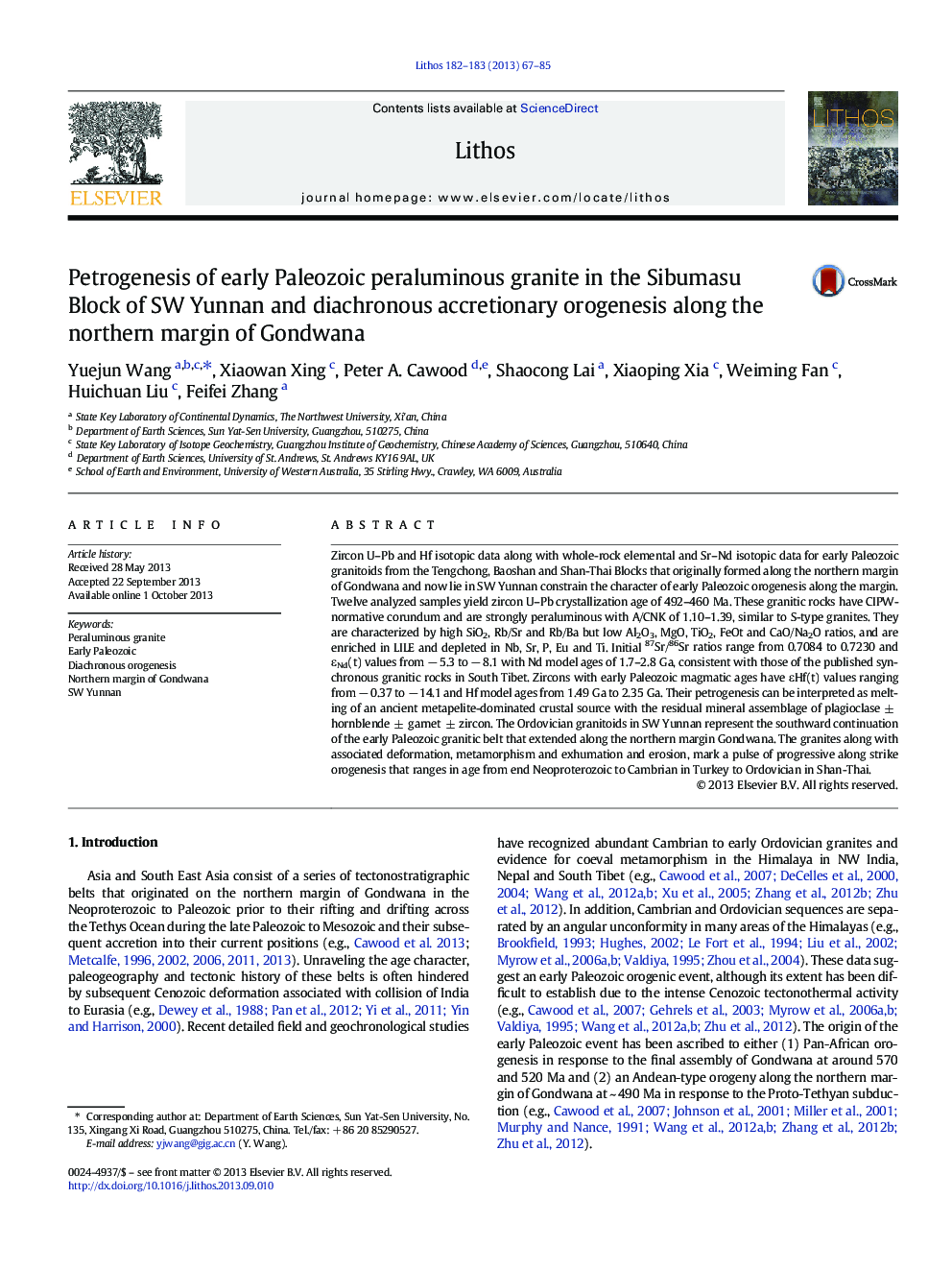| Article ID | Journal | Published Year | Pages | File Type |
|---|---|---|---|---|
| 6440829 | Lithos | 2013 | 19 Pages |
Abstract
Zircon U-Pb and Hf isotopic data along with whole-rock elemental and Sr-Nd isotopic data for early Paleozoic granitoids from the Tengchong, Baoshan and Shan-Thai Blocks that originally formed along the northern margin of Gondwana and now lie in SW Yunnan constrain the character of early Paleozoic orogenesis along the margin. Twelve analyzed samples yield zircon U-Pb crystallization age of 492-460 Ma. These granitic rocks have CIPW-normative corundum and are strongly peraluminous with A/CNK of 1.10-1.39, similar to S-type granites. They are characterized by high SiO2, Rb/Sr and Rb/Ba but low Al2O3, MgO, TiO2, FeOt and CaO/Na2O ratios, and are enriched in LILE and depleted in Nb, Sr, P, Eu and Ti. Initial 87Sr/86Sr ratios range from 0.7084 to 0.7230 and εNd(t) values from â 5.3 to â 8.1 with Nd model ages of 1.7-2.8 Ga, consistent with those of the published synchronous granitic rocks in South Tibet. Zircons with early Paleozoic magmatic ages have εHf(t) values ranging from â 0.37 to â 14.1 and Hf model ages from 1.49 Ga to 2.35 Ga. Their petrogenesis can be interpreted as melting of an ancient metapelite-dominated crustal source with the residual mineral assemblage of plagioclase ± hornblende ± garnet ± zircon. The Ordovician granitoids in SW Yunnan represent the southward continuation of the early Paleozoic granitic belt that extended along the northern margin Gondwana. The granites along with associated deformation, metamorphism and exhumation and erosion, mark a pulse of progressive along strike orogenesis that ranges in age from end Neoproterozoic to Cambrian in Turkey to Ordovician in Shan-Thai.
Keywords
Related Topics
Physical Sciences and Engineering
Earth and Planetary Sciences
Geochemistry and Petrology
Authors
Yuejun Wang, Xiaowan Xing, Peter A. Cawood, Shaocong Lai, Xiaoping Xia, Weiming Fan, Huichuan Liu, Feifei Zhang,
